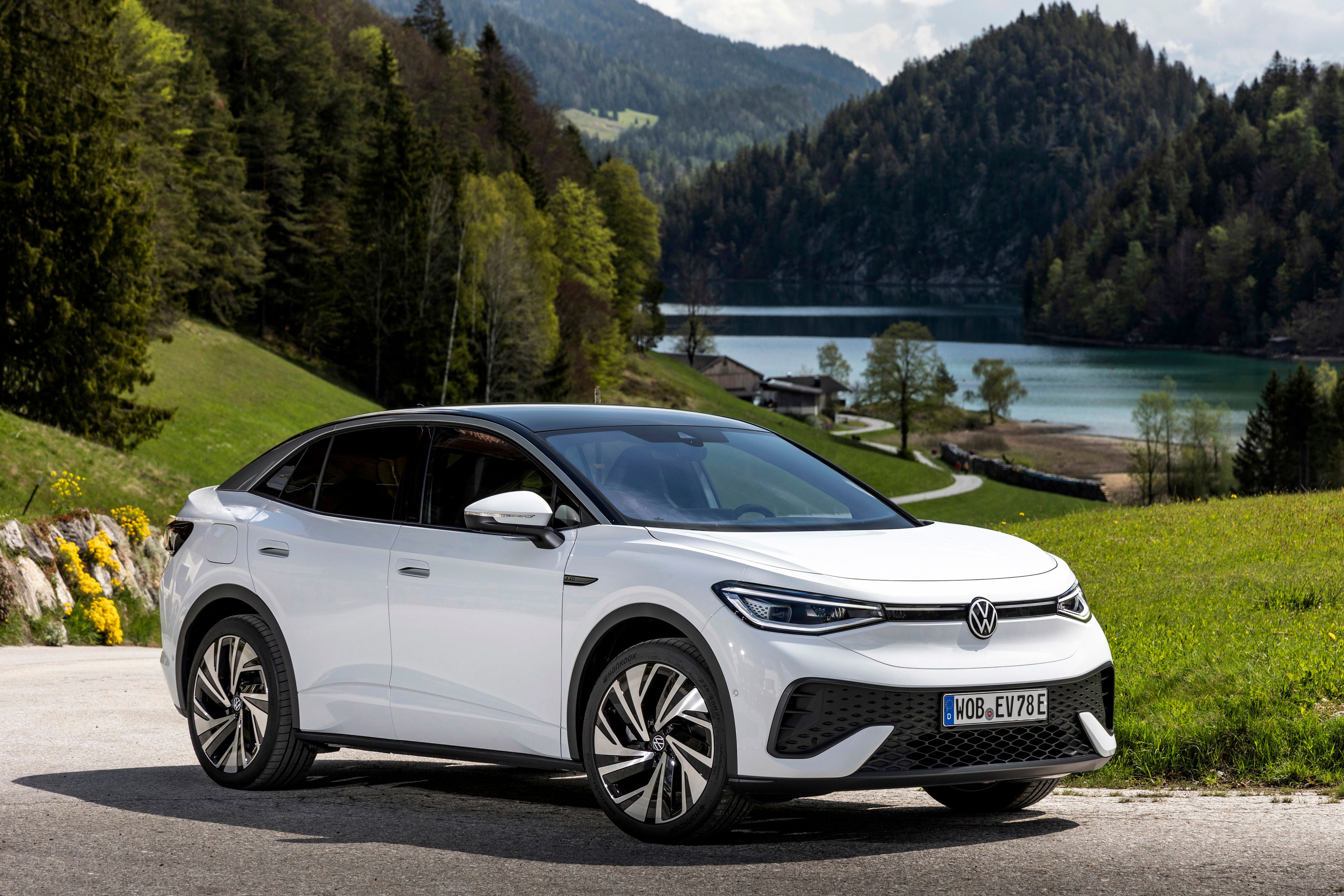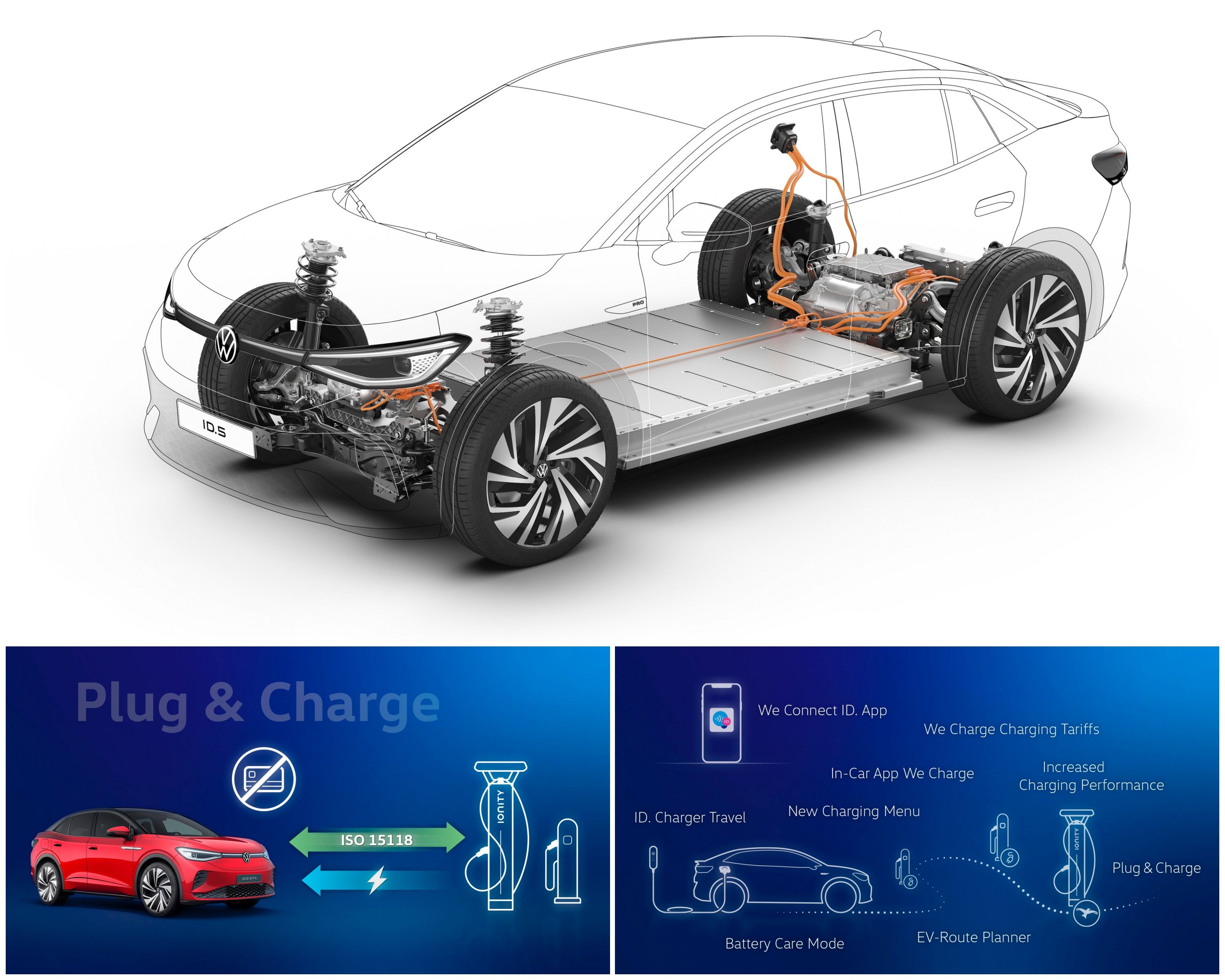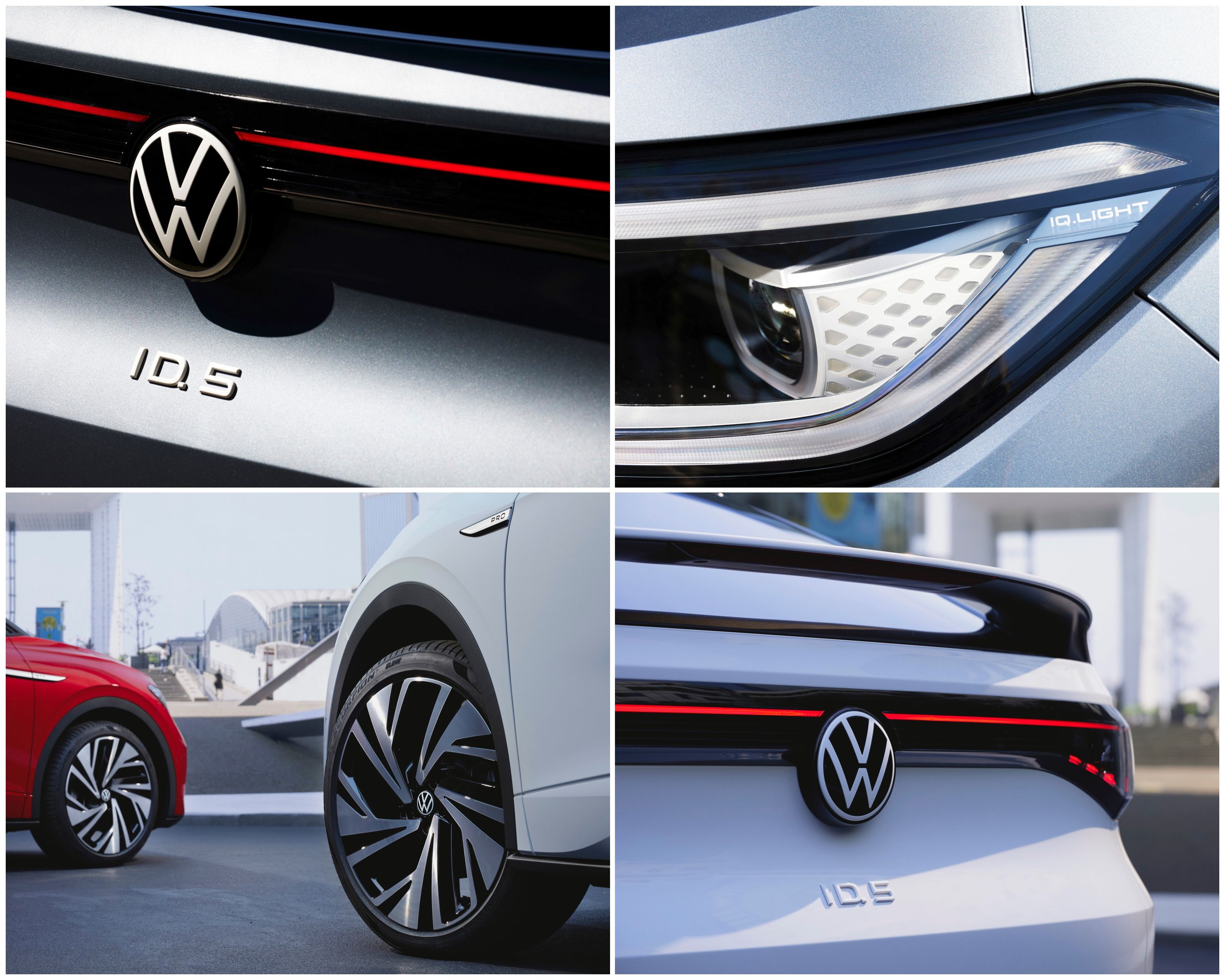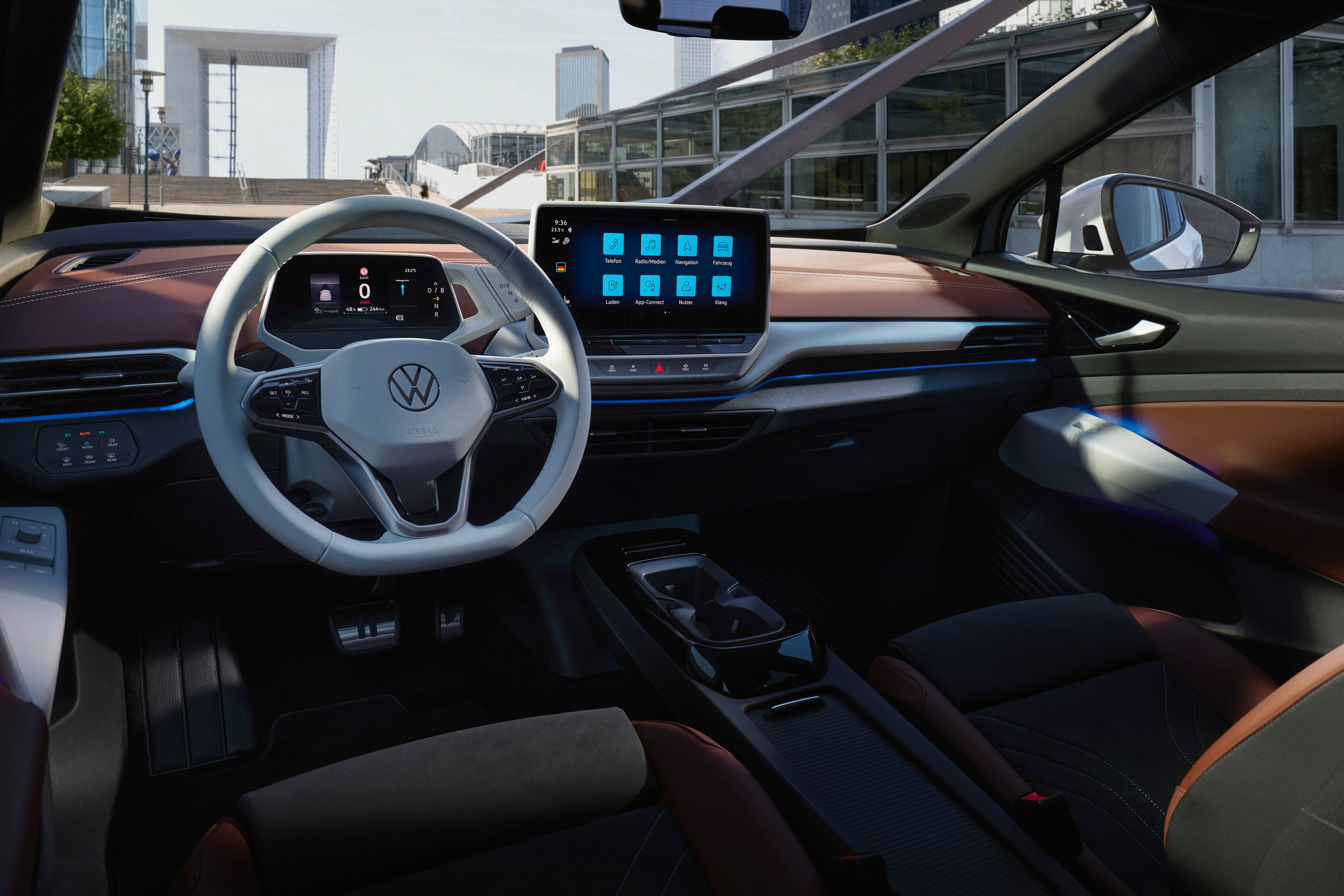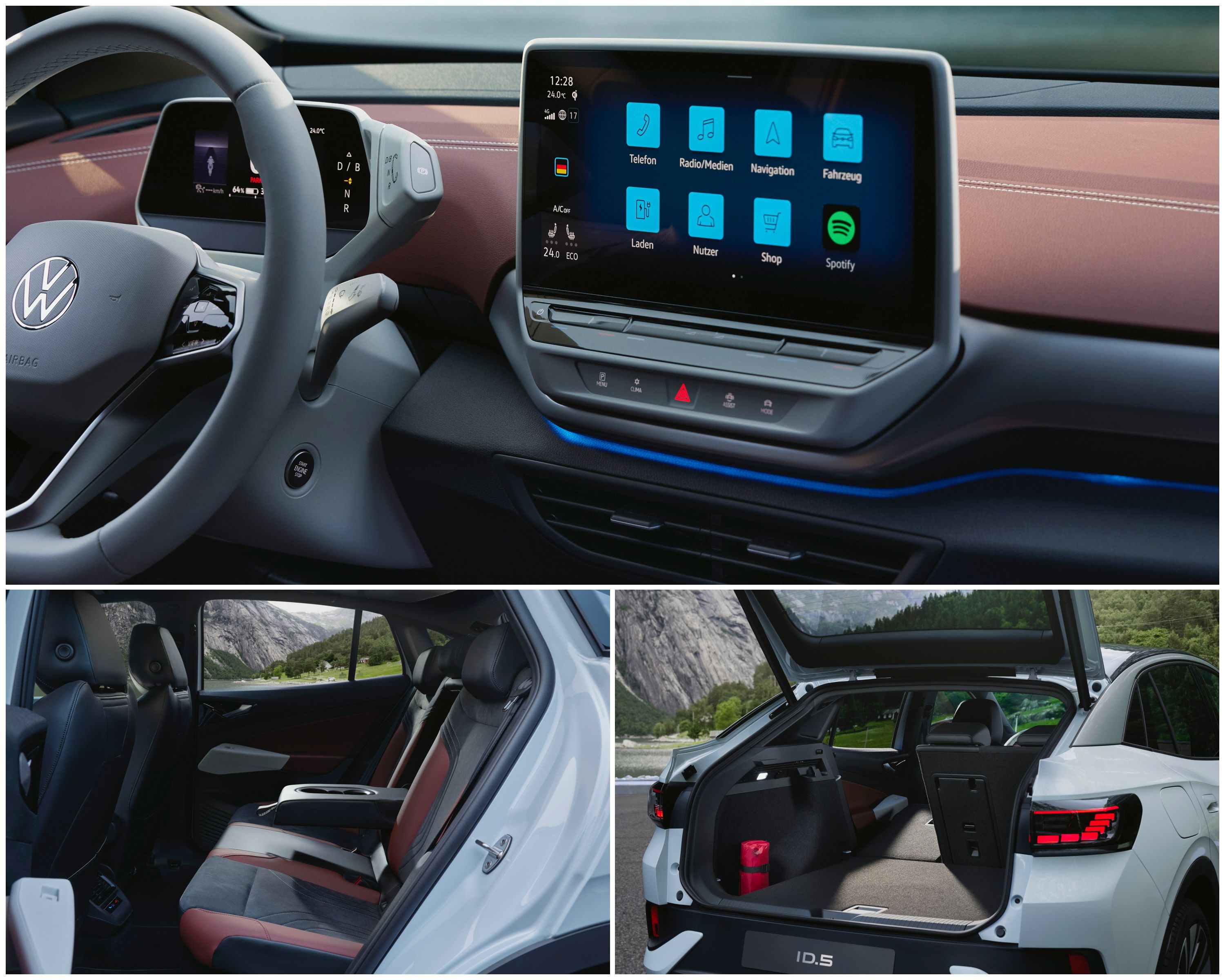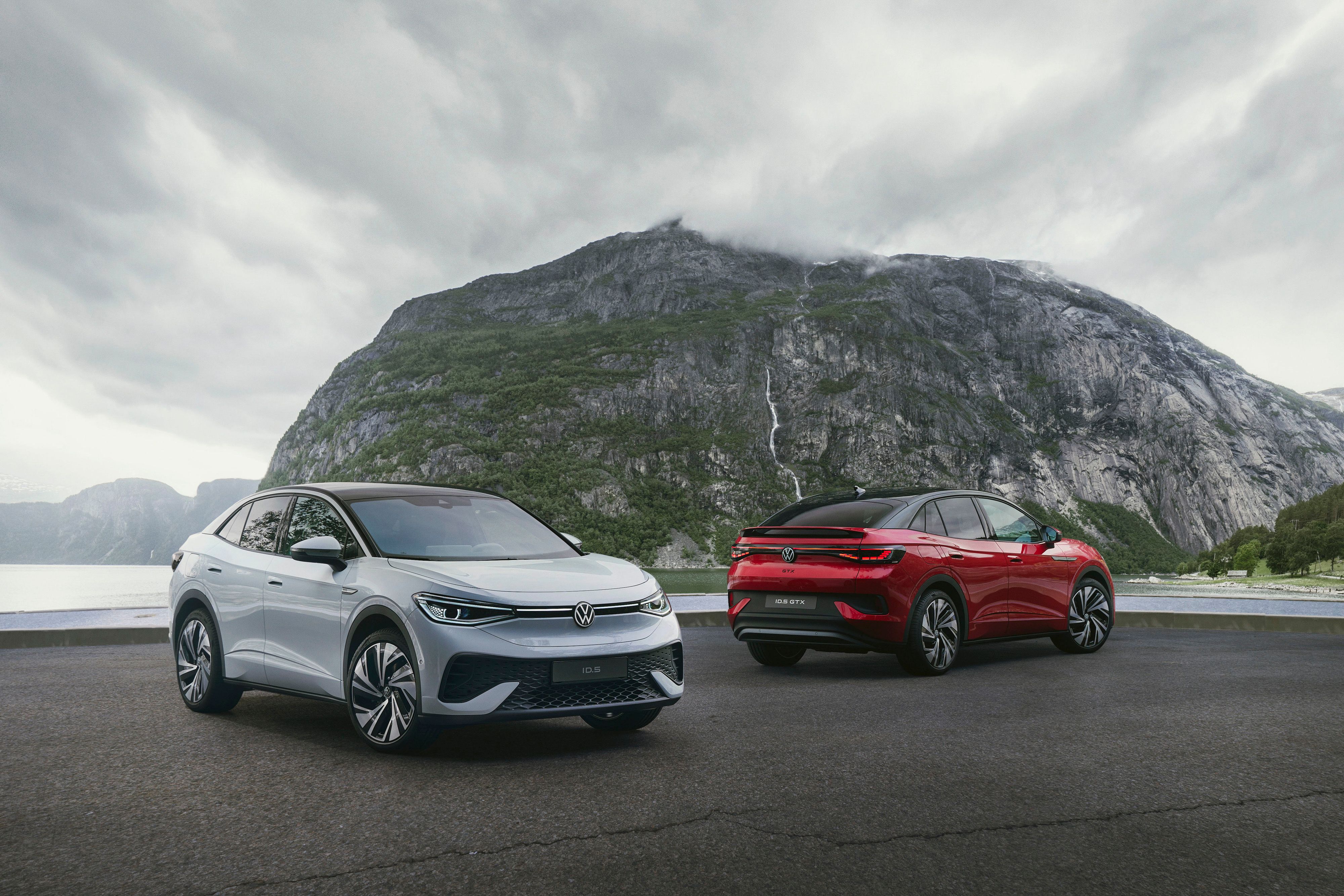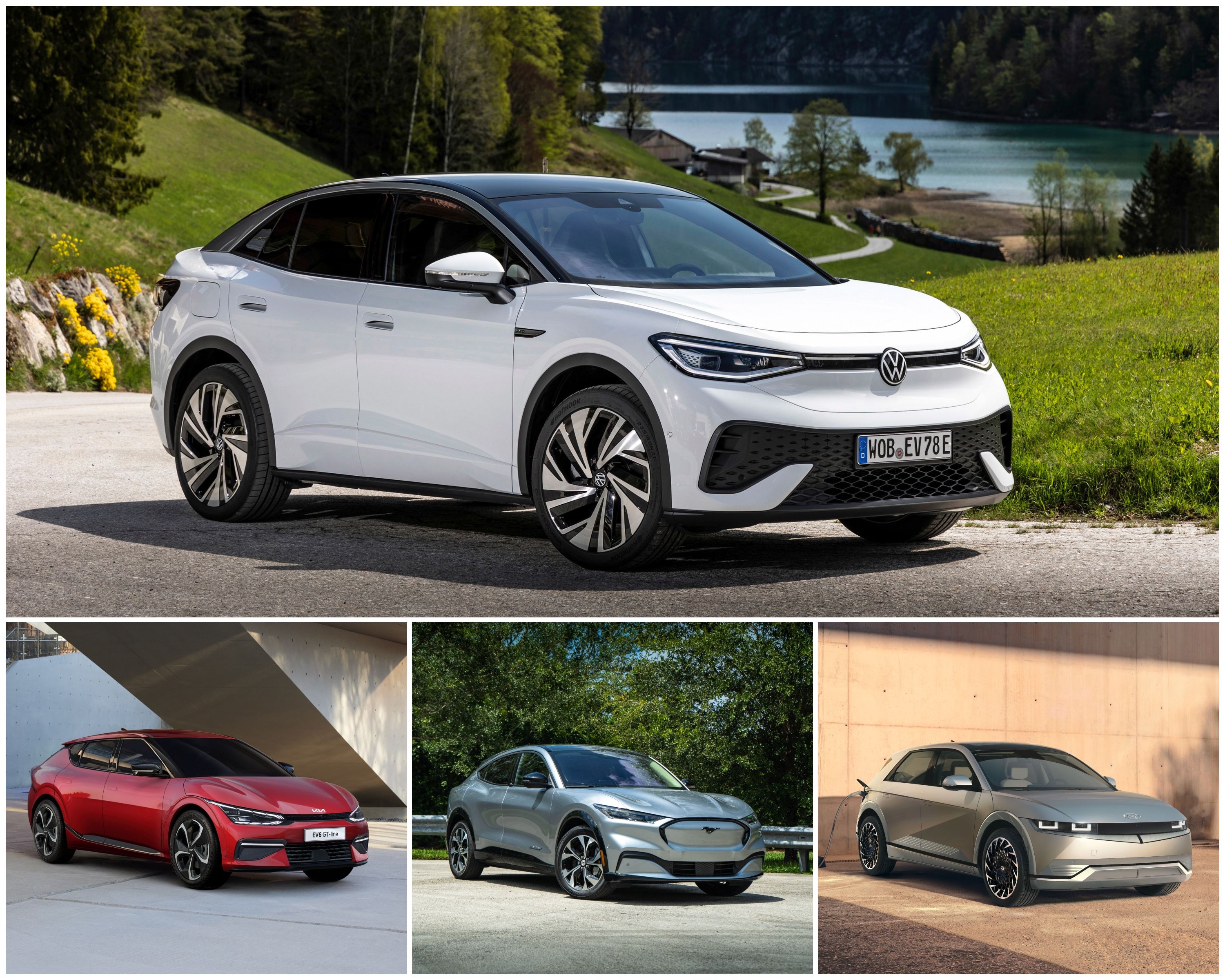Meet the Volkswagen ID.5, the German automaker's first-ever all-electric coupé SUV. Unveiled in November last year, the ID.5 follows in the footsteps of its more practical sibling, the 2021 Volkswagen ID.4.
While both EVs utilize VW's MEB platform, currently being adopted across several brands within the Volkswagen group, the ID.5 brings certain vital updates that will be key to the ID brand's future success. Also, the ID.5 sits right in the middle of VW's plan to stop selling gas-powered vehicles in Europe by 2035. So, what's the difference between ID.4 and ID.5? Let's get straight to it.
Volkswagen ID.5 - Performance and Capability
Volkswagen ID.5 Trims
|
ID.5 Pro |
ID.5 Pro Performance |
ID.5 GTX |
Specifications (Euro)
|
Battery Capacity |
77 kWh |
77 kWh |
|---|---|---|
|
Transmission |
1-Speed Automatic |
1-Speed Automatic |
|
Horsepower |
174 |
204 |
|
Torque |
174 lb-ft |
229 lb-ft |
|
Driveline |
RWD |
RWD |
|
0-60 mph |
10.4s |
8.4s |
|
Top Speed |
100 mph |
100 mph |
|
Range |
320 miles |
320 miles |
Regardless of the trim you choose, all ID.5s pack the same 77 kWh battery pack. The states of tune, though, are different. The base model Pro packs 174 horsepower that comes courtesy of its single rear-drive motor.
Step it up to Pro Performance and you're looking at 204 horsepower. Choose the top-spec GTX trim and you'll have 300 horsepower at your disposal via a dual-motor all-wheel-drive setup. VW claims a range of 320 miles for the Pro and the Pro Performance while you can expect 298 miles for the GTX.
On the dynamics front, there's the standard suspension, or you can step it up to the optional DCC or Dynamic Chassis Control which does exactly what it says on the tin. Although the ID.5 is being positioned as an SUV, given that the ground clearance is pretty limited, it's best that you stick to the pavement. As for towing, the ID.5 can manage up to 1,653 pounds unbraked and 2,645 pounds braked.
On the charging front, Volkswagen has increased the ID.5's DC fast-charging capacity to 135 kW, which is 10 kW higher than the ID.4 and means a faster overall charging time. To put that into context, you should be able to juice up the ID.5's battery from five- to 80-percent in just 36 minutes.
Exterior Design
The coupe SUV formula has spread far and wide within the automotive demographic and is now making its way into the EV space as well. The BMW X6 took the SUV-coupe body style mainstream, and this sporty take on the practical SUV continues to be immensely popular with buyers even today. VW, too, wanted to add a bit of flair to the VW Electric SUV recipe in a bid to appeal to a wider audience. Hence the ID.5.
You have the same front facia with a plastic trim piece that tries to mimic a grille. The front bumper changes if you choose to go with the GTX trim. It is only when you view the ID.5 from the side will you notice the sloping roofline of the ID.5. The ID.5 takes a more low-slung coupe-like profile with a drag coefficient of 0.26. Apart from the eyeball-like Matrix LED headlights that integrate within that fake grill to form a lightbar, you also have the recently refreshed VW logos.
But, perhaps the most distinctive design elements of the ID.5 are the painted door trims and that neatly integrated rear wing. It sits atop the trunk lid along with a new 3D effect tail-light setup. As for wheel sizes, they range between 19- and 21 inches. The overall styling is typical VW fare, in that it is more conservative to have a mass appeal.
Exterior Colors
- Moonstone gray plain/roof in black
- Glacier white metallic/roof in black
- Myth black metallic
- Kings Red Metallic/Roof in Black
- Blue Dusk Metallic/Roof in Black
- Stonewashed Blue Metallic/Roof in Black
Exterior Dimensions
|
Length |
180.39 in |
|---|---|
|
Width |
72.91 in |
|
Height |
63.58 in |
|
Ground Clearance |
6.42 in |
|
Wheelbase |
109.09 in |
|
Curb Weight |
4777.42 lbs |
Interior Quality and Technology
If you've seen that dash of the ID.4, you've seen the dash of the ID.5 as well. You pretty much get the same setup with a design that exudes a more sophisticated and futuristic look. Expect to find typical VW build quality. You get a predominantly animal-free cabin, with only the steering wheel retaining real leather. You can also choose to go with interior trim pieces in white, which is not everyone's cup of tea, I'm afraid.
Buyers have a couple of options for seating with the Sports seats packing integrated headrests and perforated ID. logos. The 30-color interior ambient LED lighting should help you set the perfect ambiance for night driving.
The main updates though have taken place on the technology front. The new Version 3.0 software from Volkswagen sees a vast improvement in the lag and touch response of the 12-inch infotainment display that marred the ID.4. The 5.3-inch digital driver's display meanwhile works really well with an augmented reality heads-up display for navigation.
The voice command system that works with visual responses on the dash via an LED bar also gets better with the update. However, the low point of the interior experience by far has to be touch-sensitive sliders for stuff like radio and climate controls which still don't offer backlighting or haptic feedback.
Moving on to interior packaging and space, given the tear-drop shape of the ID.5, you might assume that the rear-seat headroom and cargo area have taken a hit. However, Volkswagen has shaved off less than an inch (12 mm) of that precious headroom.
The German automaker, in fact, managed to eke out even more space from the trunk at 19.39 cubic feet, slightly more than the ID.4's 19.18 cubic feet. With the seats down, that volume expands to an impressive 55.13 cubic feet. The fixed panoramic roof floods the cabin with ample light, making it appear even roomier.
Volkswagen ID.5 - Price and Availability
Will the ID.5 be sold in the U.S.? Well, given that sporty SUVs are all the rage these days, I think VW should consider it for sure. As I mentioned earlier, the VW ID.5 comes in a couple of variants depending on where you are. Some European markets only get the base Pro and the top-spec GTX trims. In Europe, there is a difference of €1600 between the base model ID.4 and a base model ID.5. That is a four-percent price increase.
Keeping that in mind, the base model ID.4 in the states begins at $41,230. Factor in a four-percent markup and that comes to roughly $1,650. So you're looking at ~ $42,800 for the base ID.5 Pro and this is before we've factored in the $7,500 federal tax credit, which would lower the price to $35,300.
These numbers are purely speculative though and we'll only know more about actual pricing if VW decides to bring the ID.5 to the United States. Expect pricing to be significantly higher should VW decide to import the ID.5 rather than manufacture it here at the Chattanooga plant in Tennessee.
Safety
The level of equipment on offer with regards to safety is frankly vast. There's the autonomous emergency braking system that employs sensors to keep track of other road users like pedestrians, cyclists, and other vehicles.
It works with driver assistance features including traffic jam assist, adaptive cruise control, lane-keeping assist, and lane change. In short, the ID.5 offers semi-autonomous driving to a certain degree. The Volkswagen ID.5 was recently awarded the maximum five stars by Euro NCAP.
Given that the ID.4 achieved an overall five-star rating in the NHTSA tests, you can expect similar results for the ID.5 as well, should it go on sale in the United States.
Competition
Purely based on the speculative pricing I just touched upon, the primary rivals for the Volkswagen electric SUV, could be EVs like the Mustang Mach-E, and the Korean siblings in the form of the Hyundai Ioniq 5, and the Kia EV6. }
Expect the ID.5 to have similar range estimates to the ID.4. Find below the EPA figures for the similar spec RWD models with similar battery capacities.
Anything north of 50k though would put it in contention with more premium offerings inducing the likes of the Audi Q4 Sportback e-Tron, the Volvo C40 Recharge and the Polestar 2.

